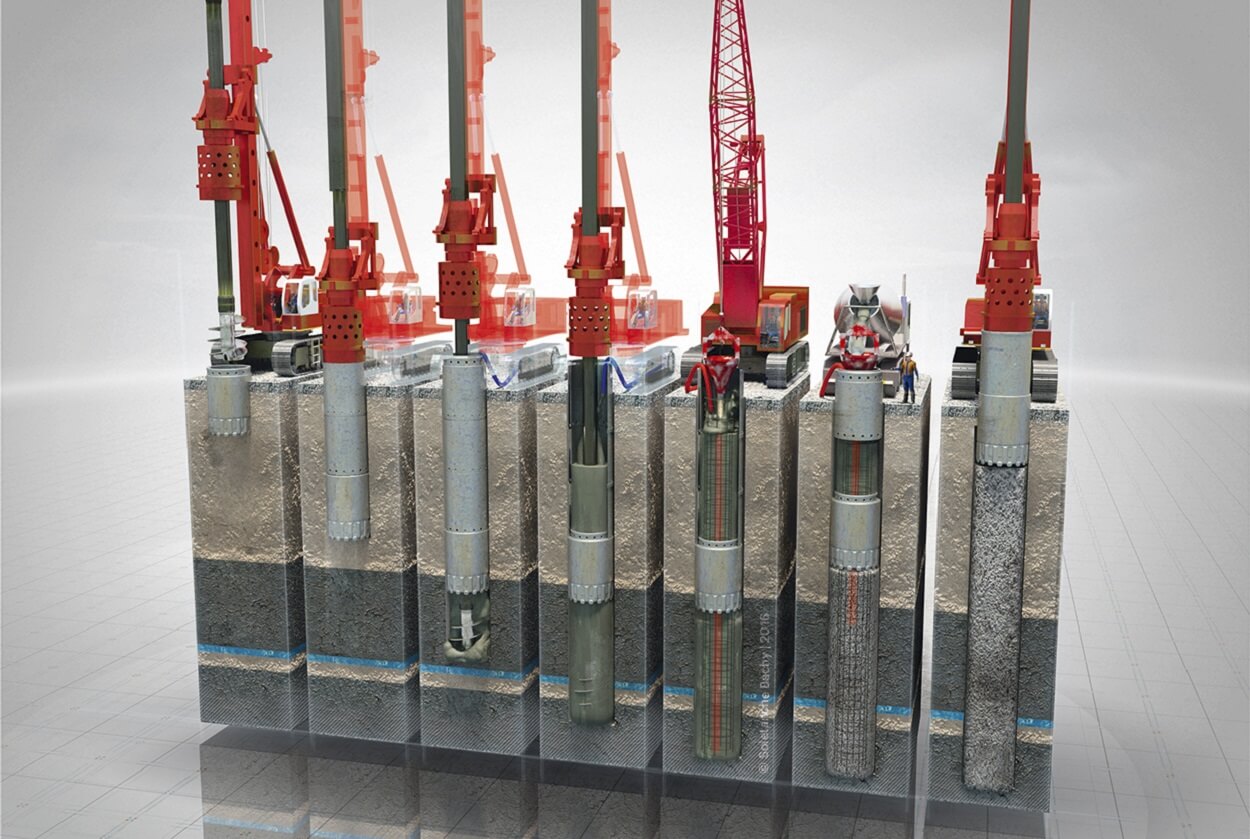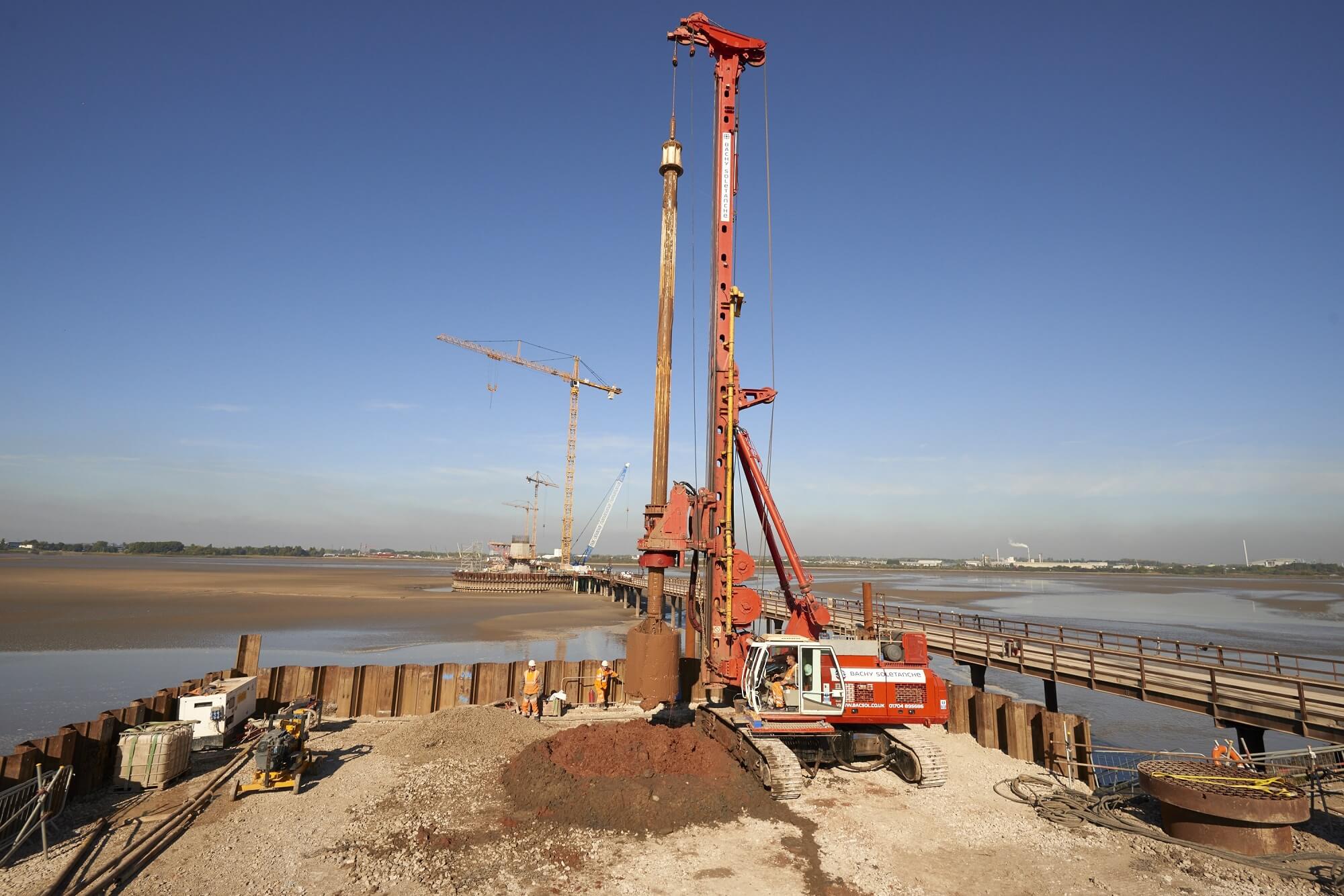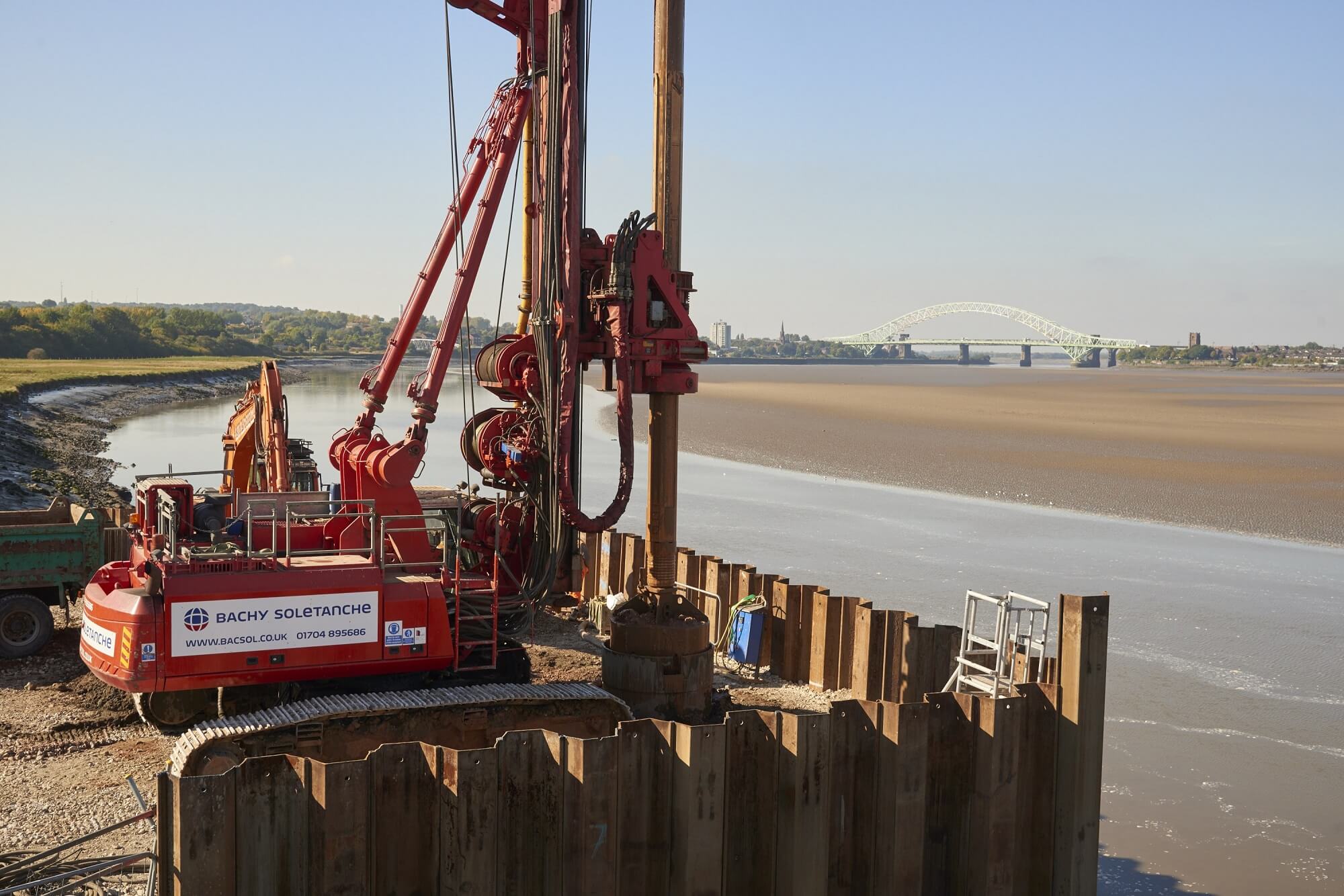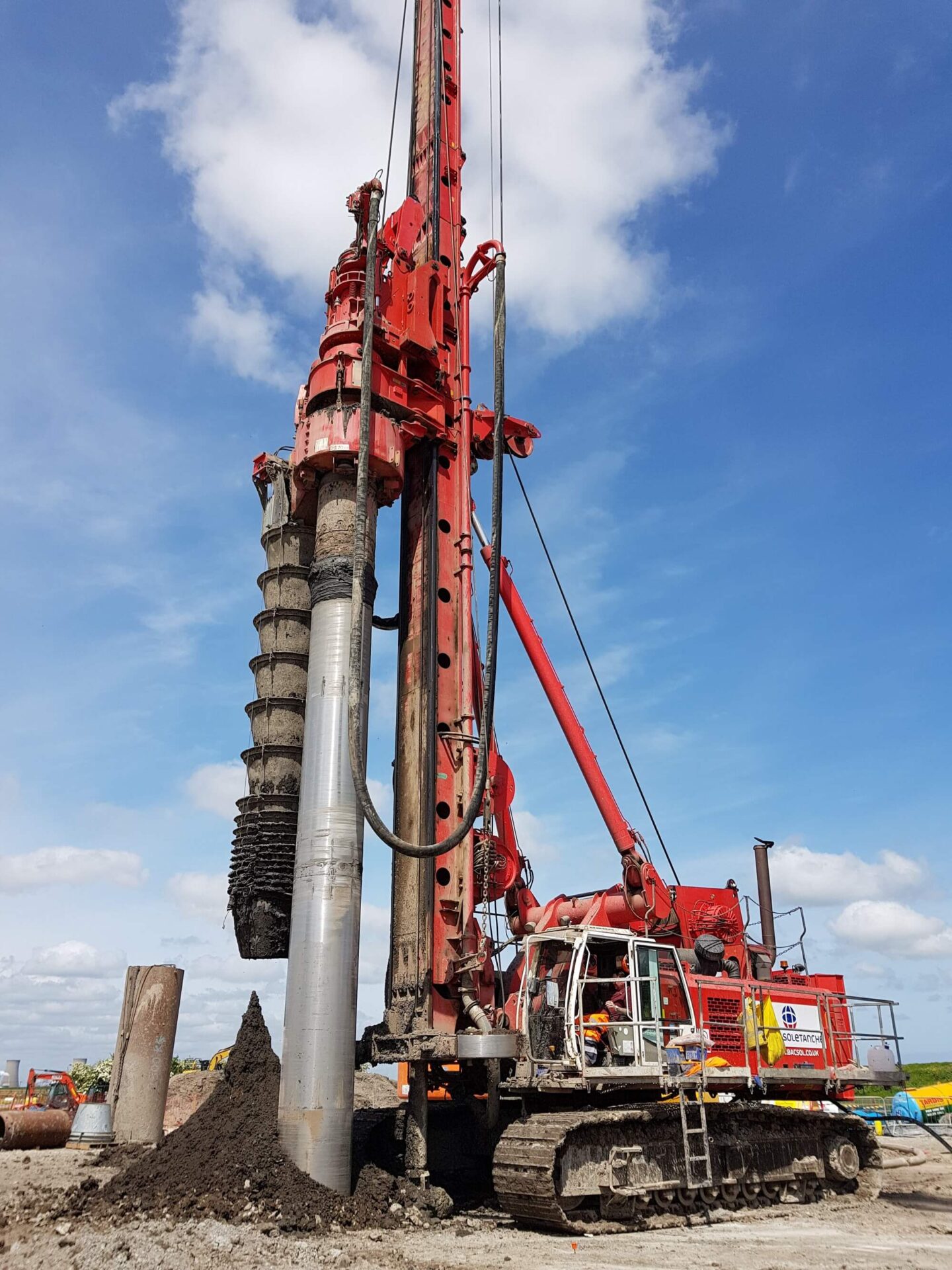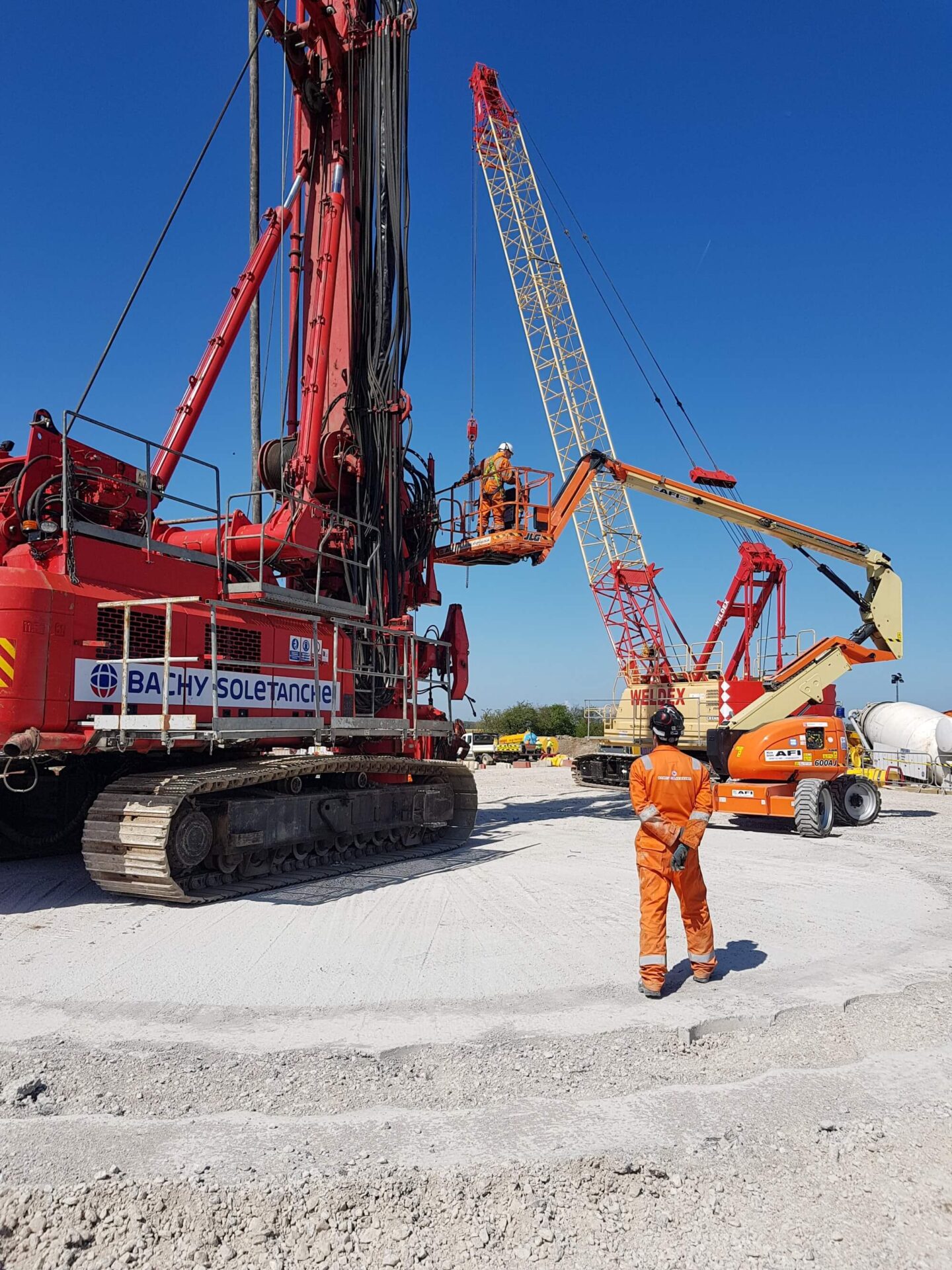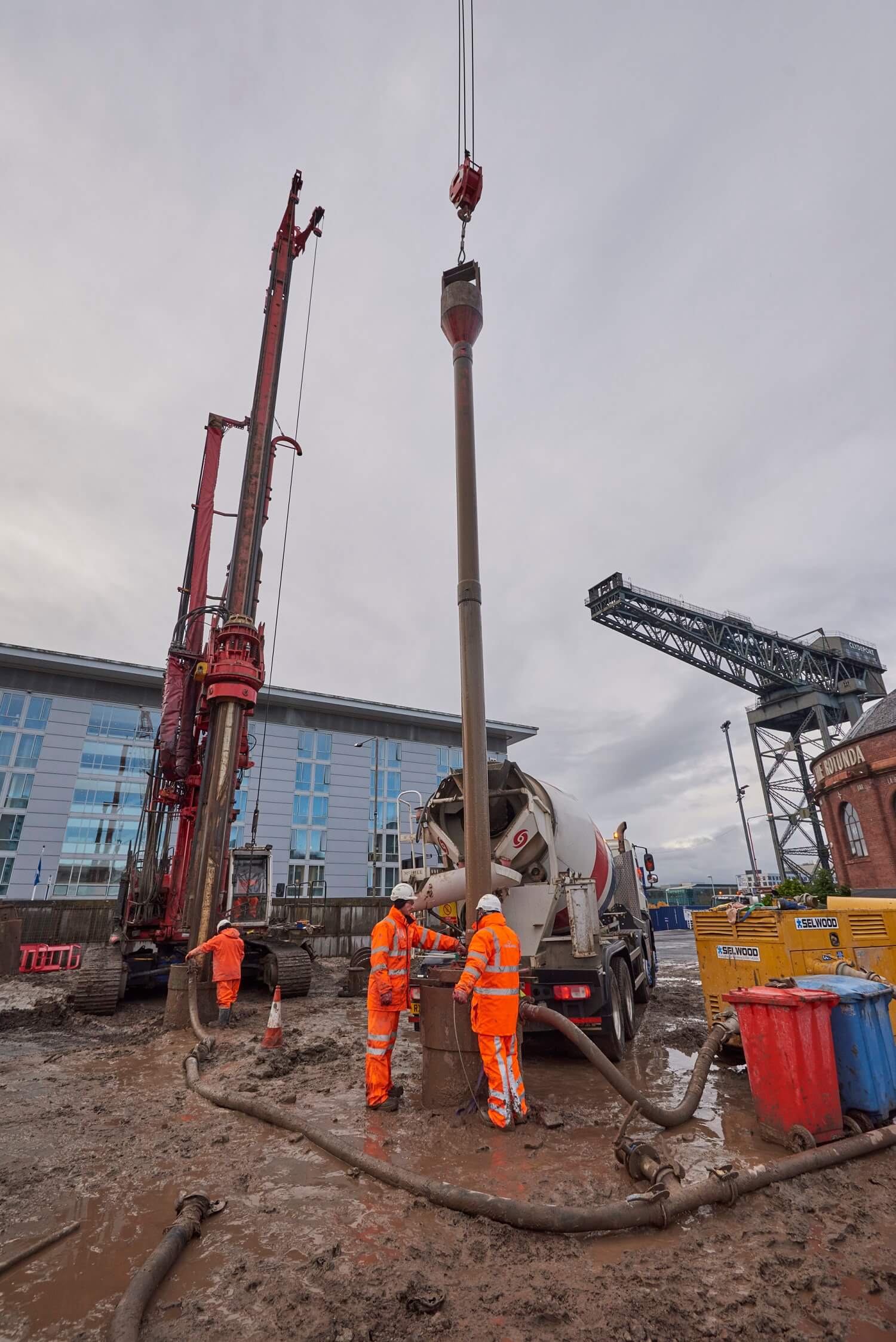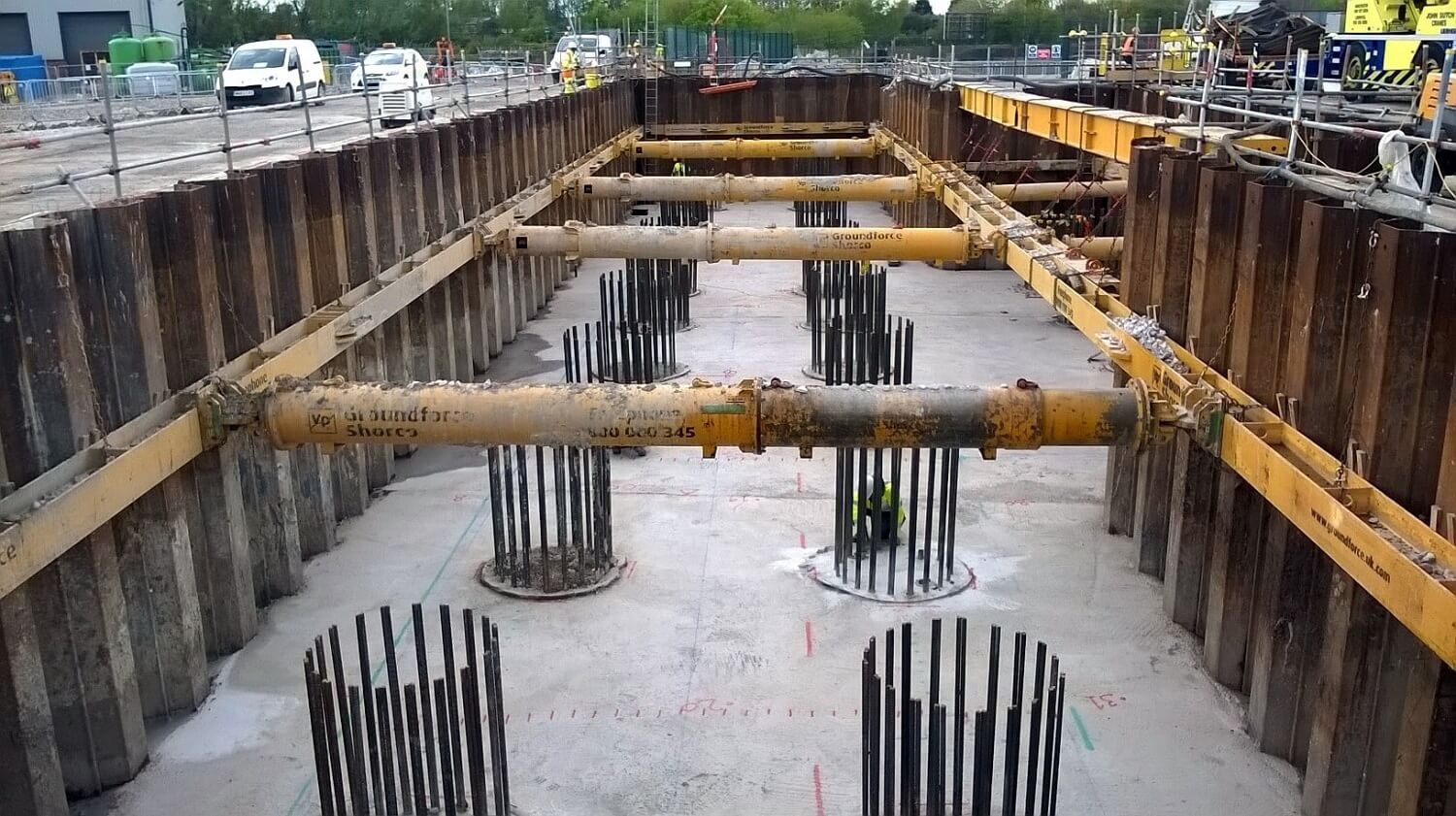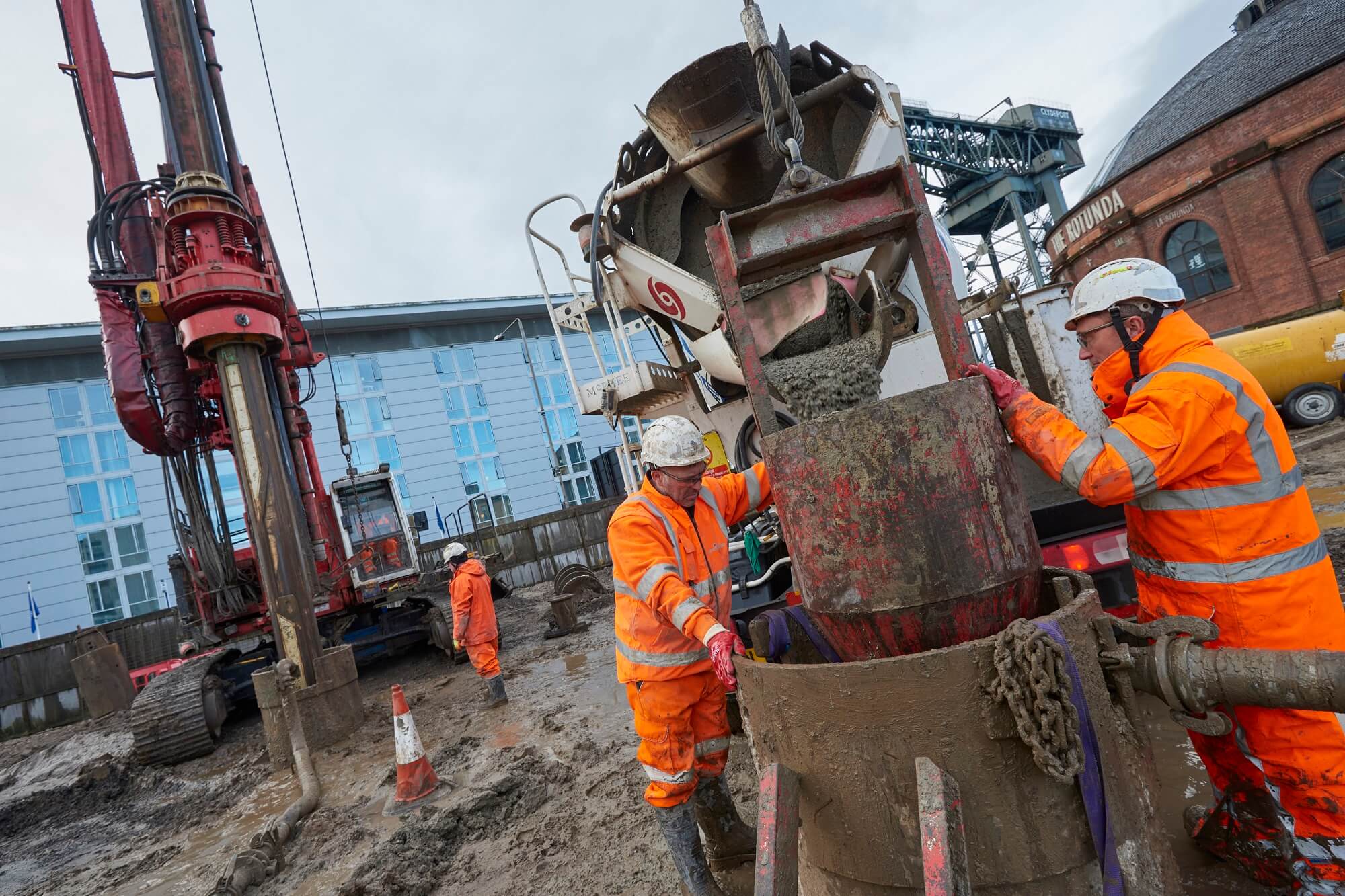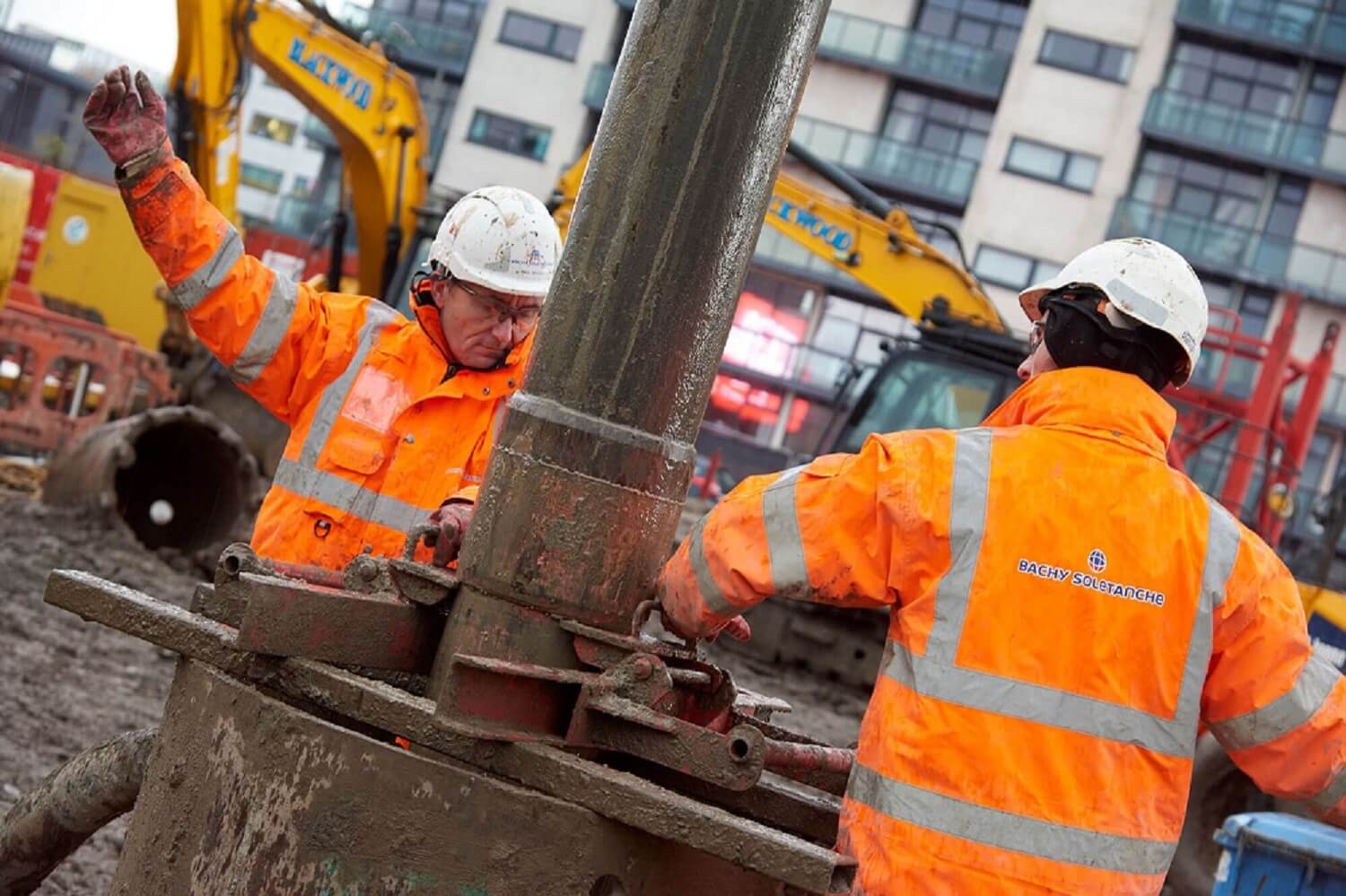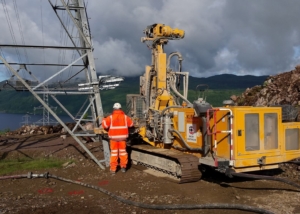Large Diameter Auger piles (often referred to as LDA piles) are the most traditional piles and are suitable for carrying very high loads. They cope well with the most challenging ground conditions and are typically used as foundations for medium to large structures but can also be used for retaining walls e.g. basement construction.
HOW IT WORKS:
Large Diameter Bored piles are constructed using powerful hydraulic piling rigs which can use interchangeable attachments such as augers, buckets or core barrels. These tools can cope with all types of granular or cohesive soils including rock up to a strength of 100MPa. Typically, augers are used in cohesive and dry non-cohesive ground, digging buckets in saturated granular strata and a combination of rock augers and core barrels in harder strata. LDA piles use a temporary steel casing to support unstable ground and provide safe working conditions at platform level.
The casings can be either single walled casings that can be twisted or vibrated into the ground or double walled segmental casings equipped with a cutting shoe that can be installed by using the rig’s rotary drive or by an oscillator. Heavy duty casings are used with high torque rigs to overcome obstructions or hard strata in the ground.
Depending on the ground conditions support fluids such as bentonite or polymer may be a more efficient method of stabilising a pile bore in comparison to the use of longer casings.
After the pile had been bored the reinforcement cage is installed and concrete placed often through by a tremie to complete pile construction. The base of the pile can be enlarged with the use of an undeream tool which produces a vertical cone to toe to the pile. Typically, these bases can be up to 3 times the diameter of the shafts. These types of bases are formed in cohesive type soils.
Capability: Depending upon ground conditions, we are able to construct LDA piles to a diameter of 2800mm (Undereams up to 7200 mm diameter) and to a depth in excess of 65m.
Advantages: Deep piles can be constructed with full length reinforcement to carry high loads and bending movements; they can be used on or off shore and the technique has interchangeable tools to suit all ground conditions, and the ability to core obstructions.
